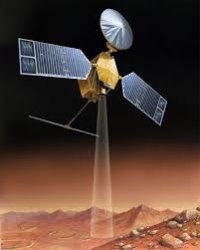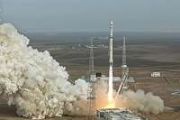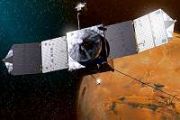Mars Reconnaissance Orbiter (MRO) is a multipurpose spacecraft designed to conduct reconnaissance and Exploration of Mars from orbit.
The spacecraft was built under the supervision of the Jet Propulsion Laboratory (JPL). The mission is managed by the JPL, at California Institute of Technology, La Canada Flintridge, California, for the NASA Science Mission Directorate. It was launched August 12, 2005, and attained Martian orbit on March 10, 2006.
In November 2006, after five months of aerobraking, it entered its final science orbit and began its primary science phase. As MRO entered orbit it joined five other active spacecraft which were either in orbit or on the planet surface: Mars Global Surveyor, Mars Express, Mars Odyssey, and two Mars Exploration Rovers; at the time a record for the most operational spacecraft in the immediate vicinity of Mars.
MRO contains a host of scientific instruments such as cameras, spectrometers, and radar, which are used to analyze the landforms, stratigraphy, minerals, and ice of Mars. It paves the way for future spacecraft by monitoring Mars' daily weather and surface conditions, studying potential landing sites, and hosting a new telecommunications system. MRO's telecommunications system will transfer more data back to Earth than all previous interplanetary missions combined, and MRO will serve as a highly capable relay satellite for future missions.































































